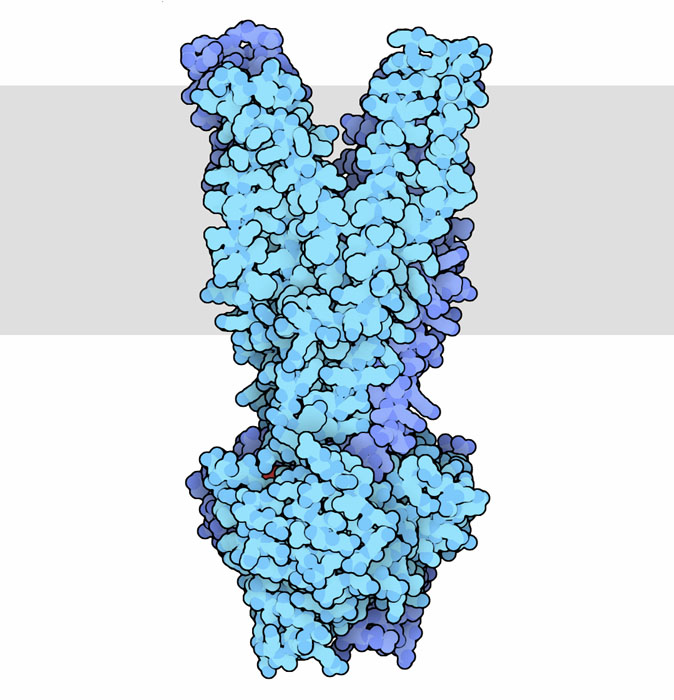|
Inhaltsübersicht | Nanomaschinen | Moleküle | Programme | Kurse | Fun | Links |
||
| > |
Multidrug Resistance Transporters

Ever since the discovery of penicillin, we have lived our lives with far less fear of infectious disease. In the decades since then, a wide variety of drugs have been isolated from natural sources or synthesized by chemists, giving our doctors a large arsenal of antibiotics to fight infection. Bacteria, however, are dynamic evolving organisms, and they have developed many methods to fight back. In some cases, they develop ways to destroy antibiotic drugs directly, for instance, some bacteria make beta-lactamase enzymes that break down penicillin. In other cases, the bacteria change their own molecular machinery, making it invulnerable to the drugs. For instance, methicillin-resistant Staphylococcus bacteria use new, resistant enzymes to build their cell walls. If these methods don't work, bacteria also have a more general method. They build special pumps that transport many different antibiotics out of the cell before they can do their job.
Drug Pump
Multidrug resistance transporters find drugs that try to gain entry through a cell membrane and they transport them back outside. The one shown here, Sav1866 from PDB entry 2onj, is found in Staphylococcus bacteria. The protein is composed of two identical subunits with a tunnel in between. Drugs enter the tunnel, and then cleavage of ATP in the large portion at the bottom causes a scissoring motion, opening the tunnel on the outer side and releasing the drug. This structure captures the protein in this final state, ready to release drugs upwards towards the outside of the cell membrane.
Defending Cells
We have a very similar molecule, called P-glycoprotein, that transports drug-like molecules out of our cells. It is found on the surface of cells in the digestive system, where it protects us from toxic molecules in our diet, and on the inner surface of blood vessels in the brain, where it forms a second line of defense that protects our brain. It is similar to the Staphylococcus transporter, but it is composed of one long protein chain instead of two identical subunits. It transports a wide variety of drugs, such as cyclosporin A, steroids like hydrocortisone, and protease inhibitors used to treat HIV infections. It also transports many anticancer drugs, which can cause serious problems for patients with cancer. Cancer cells, like bacteria, are constantly changing and mutating, and if they develop ways to overexpress the transporter, they can become resistant to chemotherapy.
Last changed by: A.Honegger,